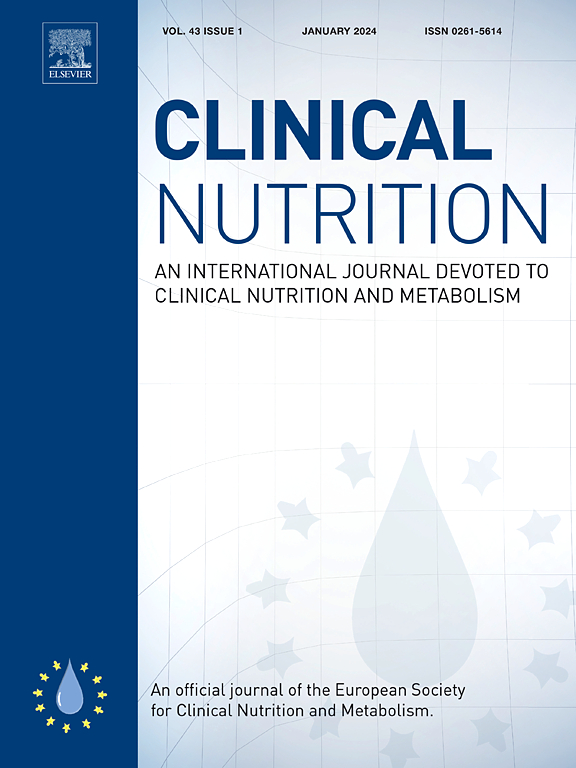神经性厌食症负能量平衡的负担:昼夜节律、线粒体动力学、微生物-肠-脑轴的作用及其相互作用
IF 7.4
2区 医学
Q1 NUTRITION & DIETETICS
引用次数: 0
摘要
神经性厌食症(AN)是一种慢性饮食失调,通常需要长期住院治疗才能有效治疗。作为一种多因素疾病,许多环境、精神和生物因素阻碍康复,形成厌食症、胃肠道疾病和焦虑抑郁障碍的恶性循环。AN患者通常表现为不适当的身体活动、睡眠障碍、昼夜激素谱改变、肠道屏障破坏、肠道微生物群失调、氧化应激和脑功能改变。这篇综述的目的是提供一个不详尽的生物学因素的概述,以获得对AN的病理生理学更深入的了解,并确定临床治疗的潜在靶点。我们选择描述肠道微生物群,昼夜节律,线粒体和大脑改变的相互关联的因素。事实上,临床和实验数据允许在这些改变的因素之间建立关系。睡眠障碍和大脑变化与认知改变、情绪障碍和进食行为紊乱有关。强迫性运动行为与负能量平衡有关,但适应性的身体活动可能会预防某些合并症。昼夜节律可能与线粒体功能障碍、睡眠障碍和身体活动有关。线粒体功能障碍可能导致假定的神经炎症,导致灰质体积减少。肠道微生物群表现出昼夜节律变化,与稳态和享乐性食物摄入调节相互作用,并与线粒体功能和身体活动有关。更好地理解所有这些关系在厌食症条件下是一个重要的问题,开辟新的治疗策略。本文章由计算机程序翻译,如有差异,请以英文原文为准。

Burden of negative energy balance in anorexia nervosa: Role of circadian rhythm, mitochondrial dynamics, microbiota–gut–brain axis and their interactions
Anorexia nervosa (AN) is a chronic eating disorder that often requires prolonged hospitalisation for effective treatment. As a multifactorial disease, many environmental, psychiatric, and biological factors impede recovery, creating a vicious circle of anorexia, gastrointestinal disorders, and anxiety-depressive disorders. Individuals with AN often exhibit inappropriate physical activity, sleep disturbances, alterations in circadian hormonal profiles, disruption of the gut barrier, dysbiosis of the gut microbiota, oxidative stress, and alterations in brain function. The aim of this review is to provide a non-exhaustive overview of the biological factors involved to gain a deeper understanding of the pathophysiology of AN and to identify potential targets for clinical cure. We have chosen to describe the interconnected factors of gut microbiota, circadian rhythm, mitochondria, and brain alterations. Indeed, clinical and experimental data allow the establishment of relationships between these altered factors. Sleep disorders and brain changes have been linked to cognitive alterations, mood disorders, and disrupted feeding behaviour. Compulsive exercise behaviour has been associated with a negative energy balance, but adapted physical activity may confer protection against certain comorbidities. Circadian rhythm may be associated with mitochondrial dysfunction, sleep disorders, and physical activity. Mitochondrial dysfunction could lead to putative neuroinflammation, causing a reduction in grey matter volume. The gut microbiota, which exhibits circadian variations, interacts with both homeostatic and hedonic food intake regulation, and is associated with mitochondrial function and physical activity. Better understand all this relationship in anorectic conditions is an important issue to open new therapeutic strategies.
求助全文
通过发布文献求助,成功后即可免费获取论文全文。
去求助
来源期刊

Clinical nutrition
医学-营养学
CiteScore
14.10
自引率
6.30%
发文量
356
审稿时长
28 days
期刊介绍:
Clinical Nutrition, the official journal of ESPEN, The European Society for Clinical Nutrition and Metabolism, is an international journal providing essential scientific information on nutritional and metabolic care and the relationship between nutrition and disease both in the setting of basic science and clinical practice. Published bi-monthly, each issue combines original articles and reviews providing an invaluable reference for any specialist concerned with these fields.
 求助内容:
求助内容: 应助结果提醒方式:
应助结果提醒方式:


